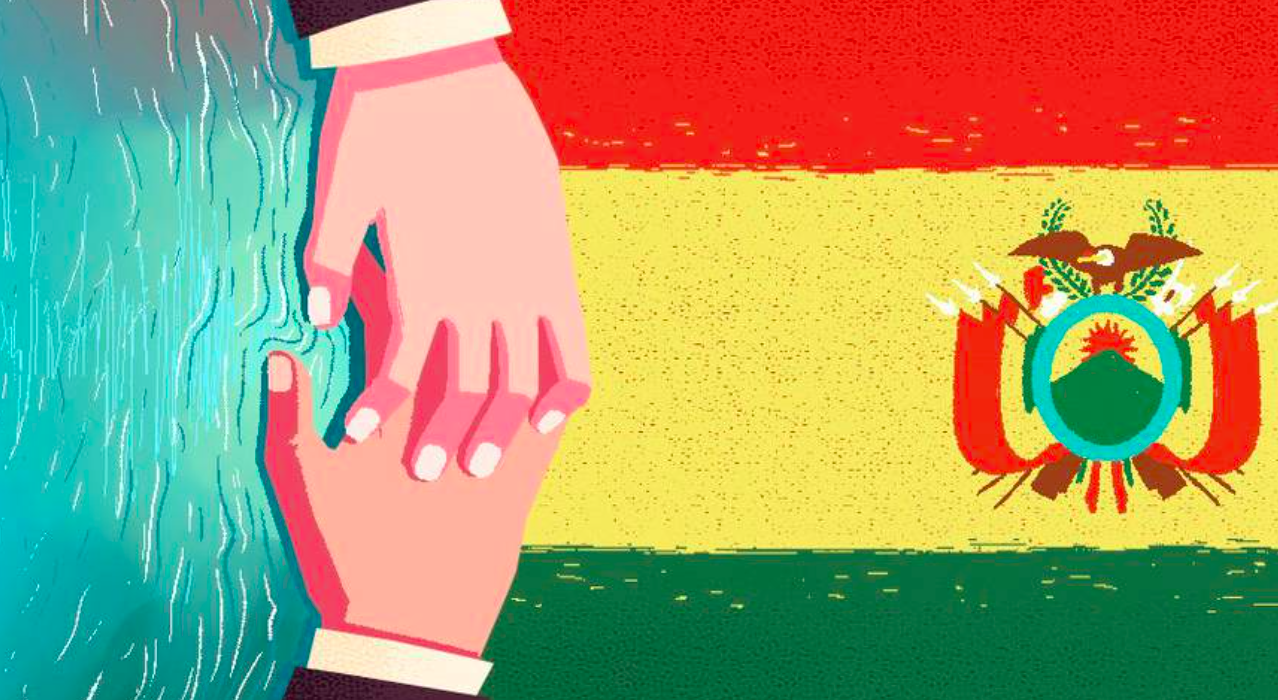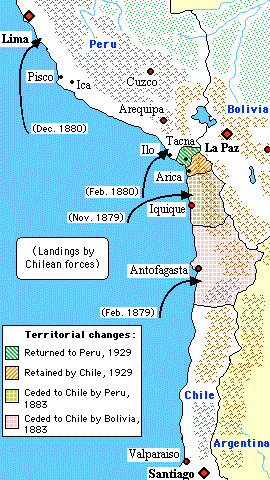RIO DE JANEIRO, BRAZIL- Bolivia’s President Luis Arce on Monday defended the Andean nation’s historic “maritime claim” in the dispute with Chile over the port of Antofagasta, which has denied his country access to the Pacific Ocean since 1879.
“As we remember the invasion of Antofagasta on February 14, 1879, we honor our heroines and heroes who defended our coastal territory. Their example is the beacon that guides us in the struggle for a dignified and sovereign Bolivia. Our maritime claim is irrefutable,” Arce stated on Twitter.
Read also: Check out our coverage on Bolivia
Former Bolivian President Evo Morales recalled the anniversary with “pain,” calling it an “unjust event.”
“Chile has snatched from us more than 400 kilometers of coastline on the Pacific Ocean. One hundred and forty-three years after this event, we continue to proclaim #MarParaBolivia,” Morales tweeted along with the cover of the newspaper El Comercio in its February 28, 1879 edition, which recorded this fact.

WAR OF THE PACIFIC 1879 – 1883
Like most wars before and since, The War of the Pacific (1879 – 1883) was about money: nitrate and guano deposits (both of which were used in fertilizers) in the Atacama Desert, in this case.
Although Peru and Bolivia owned the land where most of the nitrate mines were, the mines themselves were owned and operated by Chile. It led to disputes about taxes, which resulted in a full-blown war between Chile on the one side and Peru and Bolivia on the other.
The war started slowly, but once Chile had mobilized its navy, it quickly established supremacy over the more primitive Peruvian and Bolivian forces. The subsequent land battle was short-lived, especially for Bolivia, who surrendered as early as 1880.
Peru hung on for longer, and Chilean forces got as far as Lima, which they occupied in 1881. Two years of guerrilla warfare followed, but eventually, a treaty was signed in 1883.
Not only were 13,000 lives lost, but both Peru and Bolivia ceded vast swathes of territory to Chile.
Chile gained enormously from the war, and Peru suffered severely, but perhaps the most considerable losses were Bolivian – they gave up all of their coastal territories, including the major port of Antofagasta, in the war and have been landlocked ever since.
One of Chile’s most prominent heroes of this war, Arturo Prat, has the honor of being the man with the most Chilean streets named after him: 162 communes in Chile have a street bearing his name.
In Lima, the Parque de la Reserve was built to commemorate the occupation of Lima and boasts a small on-site museum. However, most people go to see the Magic Water Circuit – an incredible display of 13 interactive fountains that has nothing to do with the war.


